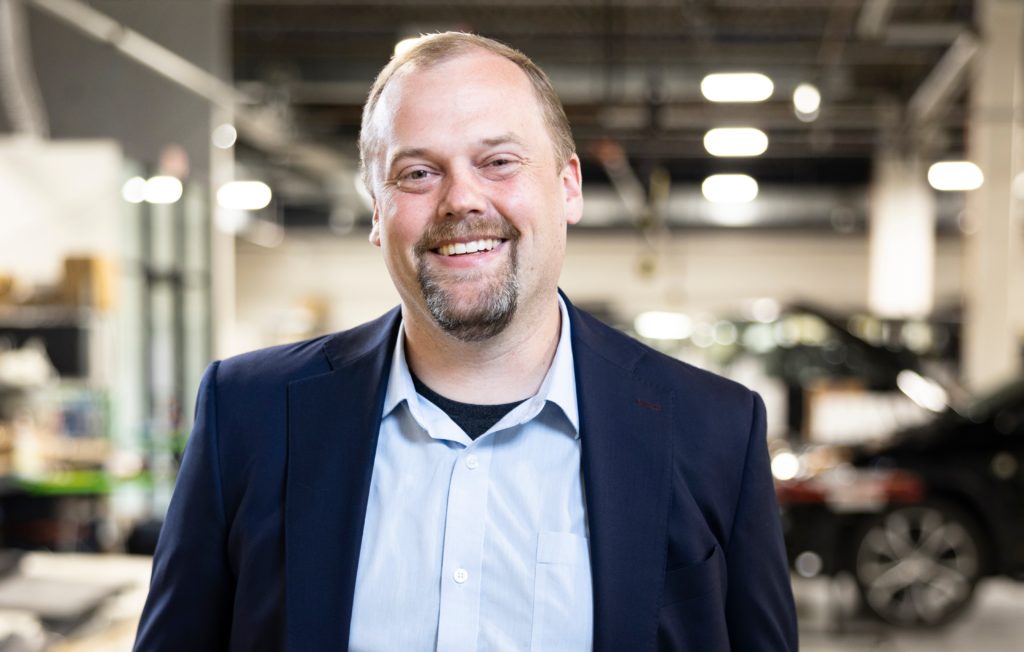There’s no such thing as low-hanging fruit in the tedious race to provide human transportation in driverless vehicles. But May Mobility is plucking whatever is available and has staked a lead with autonomously operating shuttles that it is integrating with more and more public-transportation systems.
With initial and continued backing by Toyota Motor, Ann Arbor, Michigan-based May already is closing in on unicorn status just four years after its founding as one of the vangard of autonomous-driving startups addressing a potentially vast global market. May has solidified its position as a leader while some others have faltered and is now operating shuttles in four cities in the United States and one in Japan.
“We have delivered more than half of the revenue-generating rides across the entire [AV] industry,” CEO and co-founder Edwin Olson told StrategicCIO360. “All of them are on public roads in mixed traffic; we’re not focusing on low-speed parking-lot trams. All of ours are street-legal vehicles driving with traffic and dealing with the full customer experience.”
So far, May’s clients are mainly “municipalities trying to solve transportation problems” in cities including Arlington, Texas; Indianapolis; Ann Arbor; and Hiroshima, Japan. In Hiroshima, the company is operating vehicles on a 1.9-mile route on the campus of Hiroshima University. Additionally, in Grand Rapids, May operates a 3.2-mile fixed route, and local employers “have kicked in to help provide transportation because it benefits their employees,” Olson said. May also participated in pilot projects in Detroit, Columbus and Providence.
At this point, all of May’s shuttles are backed up by a human “safety driver” on board in an application of “Level 4” autonomous driving as defined by the U.S. government; “Level 5” would be completely driverless operation. “Our system is designed so there’s no expectation that the safety driver will take over,” Olson explained. But he or she is there just in case. “We’ve been proceeding on plans to remove safety drivers. Some other companies have talked about much more aggressive plans for doing that, which haven’t come to be.”
Olson is an MIT graduate who led a University of Michigan winning team in a 2010 mapping competition and worked with Ford on AVs before joining the Toyota Research Institute in Ann Arbor. Toyota staked May to an initial $50 million in funding in 2019, and May has raised about $86 million through Series B, including funding from Toyota AI Ventures, owned by the automaker and my Maven Ventures, whose portfolio also includes General Motors’ majority-owned AV outfit, Cruise. May adapts Lexus RX450h hybrid SUVs and wheelchair-accessible Polaris Gems for its current vehicles and will add an AV based on the Toyota Sienna minivan.
May is pursuing people-moving even though the quickest and broadest commercial applications of driverless technology are coming in moving goods instead. “There’s a greater business opportunity with people,” Olson said. “People-moving is generally a higher-margin business. People are the most valuable things there are, and they care how long they’re waiting, whereas if your grocery delivery is delayed by five minutes, it’s no big deal. With logistics, autonomy doesn’t have to work as well.”
Olson’s strategy has led to May’s status as “the only AV company that generates positive gross margins.” Positive net income, he said, is “a few years out,” even as May Mobility’s valuation nears the $1-billion status that defines a unicorn. Olson declined to specify the company’s current valuation.
Olson said that May so far hasn’t generated “huge amounts of revenue. But the point is to demonstrate that our technology works and that we’re delivering real value for customers. Scale will come when these vehicles start coming off assembly lines at high volume.” Olson wouldn’t say when that will happen.
It is a tortoise-and-the-hare tale for May Mobility compared with some other AV startups, Olson said. “The hare can be flashy. People get excited about the story the hare is telling. But at the end of the day, we’re here literally to transform cities, to make cities work better and to provide access with equity, that sort of thing. We’re excited about the impact we’ve had already.”









